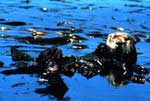- Home
- About S&T
- Taxa/Organisms
- Ecosystems
- Issues
- Methods & Tools
- Reports & Publications
- Location
- Search
December 2008 | Publisher: USGS | Format: URL
soundwaves.usgs.gov — Kristen Hart and Keith Ludwig of the USGS Florida Integrated Science Center (FISC) participated in two research cruises in 2008 to study patterns of habitat use by endangered sea turtles in and around the National Park. Hart's research effort focuses on quantifying patterns of sea turtle habitat use, employing capture-recapture and satellite- and More...
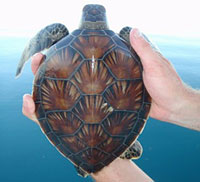
September 2005 | Publisher: USGS (Soundwaves) | Science Center: USGS Other | Format: URL
soundwaves.usgs.gov — Biologists in the Sirenia Project at the U.S. Geological Survey (USGS) Florida Integrated Science Center (FISC) in Gainesville, FL, are currently identifying and mapping the genetic material of manatees. Their goal is to better understand and predict the manatee's ability to react to environmental stimuli, such as prolonged periods of cold More...

May 2005 | Publisher: USGS | Science Center: National Wildlife Health Center (NWHC, Madison) | Format: .PDF
www.nwhc.usgs.gov — Recent increases in the frequency and variety of infectious diseases in the southern sea otter may jeopardize the population recovery of this threatened species. This information sheet includes a list of selected publications.
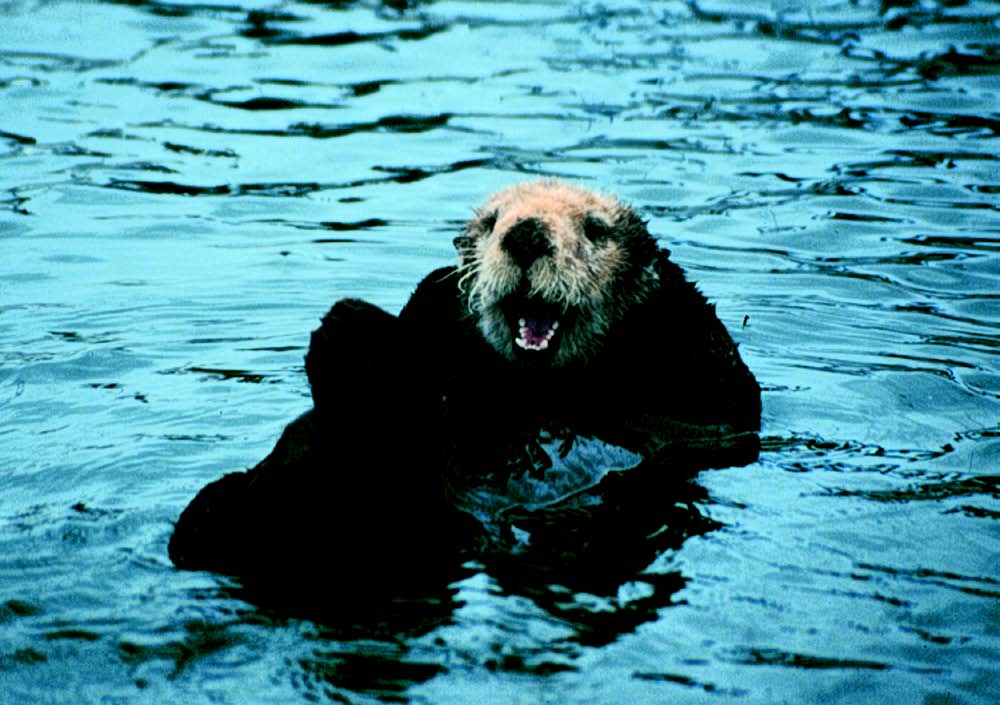
Publisher: USGS | Science Center: Alaska Science Center (ASC, Anchorage) | Format: URL
alaska.usgs.gov — This study is a new analytical procedure that quantifies the degree of overlap between adjacent populations of polar bears, and provides science for better management of the harvest of polar bears in the Beaufort and Chukchi Seas. This new analytical approach allows previously accepted population management units to be subdivided in ways that will More...

Publisher: USGS | Science Center: Alaska Science Center (ASC, Anchorage) | Format: URL
alaska.usgs.gov — It is estimated that 100,000-150,000 Bar-tailed Godwits breed in Alaska. Under the US Shorebird Conservation Plan, they are a species of High Concern mainly due to their small population size, threats to their non-breeding grounds (especially at migratory stopover sites in Asia), and their relatively restricted breeding distribution within the More...
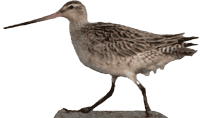
Publisher: USGS | Science Center: Western Fisheries Research Center (WFRC, Seattle) | Format: URL
wfrc.usgs.gov — Since 1994, scientists from the Anadromous Fish Ecology Team have been assisting the U.S. Army Corps of Engineers (USACE) in evaluating the migration behavior and passage of juvenile salmon and steelhead through Lower Granite Reservoir and Dam on the Snake River, WA. The goal of this study is to identify the behavior of individual juvenile salmon More...

Publisher: USGS | Science Center: Western Fisheries Research Center (WFRC, Seattle) | Format: URL
wfrc.usgs.gov — The Arctic charr (Salvelinus alpinus) in the northern most latitudes migrate to the ocean in the spring to feed and grow. This results in accumulation of polychlorinated biphenyls (PCB) in their visceral fat. During the winter, the charr reside in freshwater lakes and do not feed. They do mobilize lipids from adipose tissue for energy, which More...
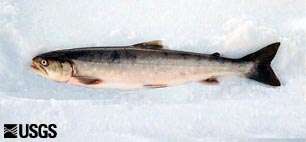
Publisher: USGS | Science Center: Western Fisheries Research Center (WFRC, Seattle) | Format: URL
wfrc.usgs.gov — This U.S./Russian collaboration will investigate genetics and life histories of Kamchatka Peninsula rainbow trout and steelhead (O. mykiss), and Dolly Varden, white-spotted, and arctic char (S. malma, S. leucomaensis, and S. alpinus, respectively). Both anadromous and resident forms of these generally occur in Kamchatka rivers that are free from More...
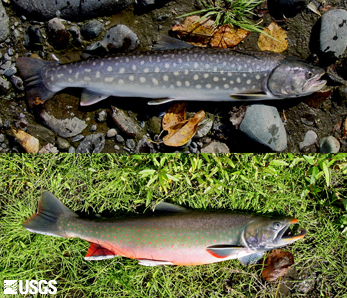
Publisher: USGS | Science Center: Western Fisheries Research Center (WFRC, Seattle) | Format: URL
wfrc.usgs.gov — Threatened and endangered salmonids in the Pacific Northwest often use backwaters and wetlands as they migrate toward the ocean, however our understanding of the role of wetlands to juvenile salmonids is limited. The major Objective of this study was to determine whether juvenile steelhead were being tapped on the wetland during spring, and More...

Publisher: USGS | Science Center: Florida Integrated Science Center (FISC, Gainesville) | Format: URL
fisc.er.usgs.gov — This website provides access to the list of imperiled freshwater and diadromous fishes of North America as determined by the 2008 American Fisheries Society (AFS) Endangered Species Committee (ESC) on Fishes. At this website, one can view lists of imperiled fishes by freshwater ecoregion, by state or province boundary, and plot distributions of More...

Publisher: USGS | Science Center: Western Fisheries Research Center (WFRC, Seattle) | Format: URL
wfrc.usgs.gov — Fall chinook salmon (Oncorhynchus tshawytscha) in the Snake River are currently listed as threatened under the Endangered Species Act (ESA). Because fall chinook salmon migrate seaward during the summer when flows are low and water temperatures are high, their survival rate is lower. The goal of this study is to more clearly identify the More...

Publisher: USGS | Science Center: Alaska Science Center (ASC, Anchorage) | Format: .PDF
www.absc.usgs.gov — An extensive and diverse array of studies were implemented concurrent with and for several years following the Exxon Valdez oil spill to determine the acute and chronic effects to sea otters. In part, this paper describes what activities relative to sea otters should take place prior to, during, and following another spill similar to the Exxon More...
